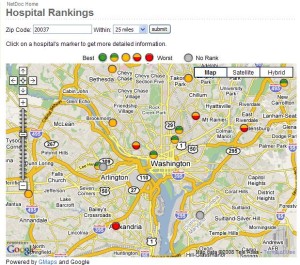Emerging trends in healthcare: Physician Ranking systems
A previous post, on this site briefly touched on ‘Zagat survey style’(for those not familiar, the Zagat survey rates restuarants in the US and around the world) physician ranking systems making their presence felt in the websphere. Believe it or not, this is not a flash in the pan. Infact, there are several establish sites that already rank physicians. Some others are extending this to hospitals, but more on that later.For this post we will stick to physicians and providers.
N.Y. leads the way
Late last year, New York’s attorney general Andrew Cuomo announced a first-of-its-kind agreement with Cigna Corp. The plan is to establish an industry standard for the doctor-rating systems that health insurers increasingly use to guide consumers. While health plans and insurers have been doing this for years, public will now have access to how health plans measure and rate doctors in terms of quality of care and cost efficiency.
Sounds fair and square? So what is the caveat? If you are a health professional you will probably identify right away that there is a possibility that this might eventually steer patients to the cheapest, rather than the best doctors and services. UnitedHealth, for instance, gives doctors and hospitals that follow certain care guidelines and are cost-efficient a “UnitedHealth Premium” designation.
Quality or Cost ?
Jim Collins in his best selling book ‘Good to Great’ says that Good is the enemy of Great. However the same logic can not be applied here. Meaning, “Quality is not the enemy of cost”. If you are not convinced all you have to do is look at other industries. In the auto industry for instance, they have realized that at some point there is a tradeoff between quality and cost and so good quality at a reasonable cost has become widely accepted. Quality guru, Walter Massing states that the only viable policy is to concentrate on failure costs and to justify prevention measures for one problem at a time.
What consumers need to know and health 2.0 sites need to publish?
So where does all this lead? Healthcare providers have a stake in this and so they will need to brace themselves, start looking at quality of care and efficiency a little more seriously. The serious Health 2.0 sites need to start publishing performance / rating on a host of information besides bedside manners and pleasantness of physician (which are important, but do not provide any insight to the physician’s chances of success in the treatment process).
Here is a sample list of indicators that we need to look at to determine the best doctors/providers for our friends and family.
Customer satisfaction metrics:Bedside manners
Process metrics: Average wait times
Clinical quality and outcomes: Hospitalization rate and risk-adjust mortality
Other measures: Clinically integrated IT systems (known to influence medication and surgery risks)

